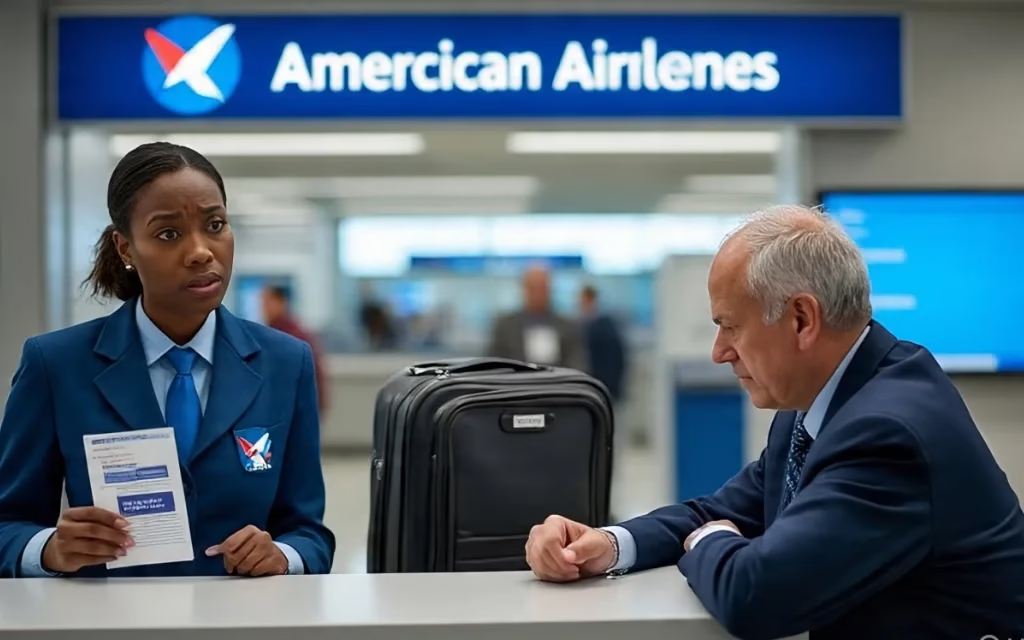When American Airlines cancels flights, it can create stress, uncertainty, and missed plans for travelers. Whether you are flying for business, vacation, or family reasons, the disruption can be overwhelming. In this article, we explore the reasons behind American Airlines cancels flights, how frequently this happens, and what you can do to minimize the impact. Throughout this article, we use the main keyword American Airlines cancels flights multiple times to improve visibility and help search engines find this helpful resource.
Understanding Why American Airlines Cancels Flights
When American Airlines cancels flights, the reasons can vary widely. Sometimes the airline faces operational issues such as crew shortages, mechanical problems, or runway congestion. In other cases, environmental forces like weather events or air traffic control restrictions come into play. Additionally, corporate decisions—like reassigning aircraft or optimizing network schedules—can cause sudden cancellations.
Operations issues are a common root cause. If a plane arrives late from a previous trip, that delay can ripple, forcing the next flight to be canceled. Crew availability is also a factor. Regulations limit how many hours pilots and flight attendants can work. If crew members exceed duty time or need rest, flights may be canceled. Maintenance issues are typically unplanned and unique to each aircraft. If essential repairs or inspections arise, American Airlines cancels flights to ensure safety is not compromised.
How Often Does American Airlines Cancel Flights?
Passengers often ask how frequently American Airlines cancels flights. According to the Department of Transportation’s most recent data, domestic airlines average cancellation rates of around two to three percent. As part of the Big Three U.S. carriers, American Airlines is close to that average. However, rates rise during peak travel seasons or weather disruptions.
If you’re traveling during holidays or winter, be extra prepared. Historically, ice storms, fog, hurricanes, or snowstorms lead to spikes in flight cancellations. Meanwhile, summer thunderstorms in certain U.S. locations can cause sudden cancellations. When American Airlines cancels flights, seasonal patterns often play a role.
Weather’s Role When American Airlines Cancels Flights
Bad weather is a major factor when American Airlines cancels flights. Airports in regions prone to winter storms, hurricanes, or frequent thunderstorms are especially affected. In northeast and midwestern U.S. cities, winter storms sometimes shut down entire airports. Likewise, hurricane season in the southeast can cause cancellations not only at origin airports but also at connecting hubs.
When storms seem likely, American Airlines might cancel flights in advance to avoid leaving passengers stranded. This proactive strategy helps the airline rebook flights before airports close. However, it can disrupt travel plans. For passengers, staying alert to weather alerts during major storm seasons is crucial.
Mechanical Delays and Maintenance
Safety is paramount. Therefore American Airlines cancels flights when a mechanical problem arises. Aircraft undergo routine and unscheduled maintenance. If parts fail or inspections reveal an issue, the airline pulls the plane from service for repair. This means even minor technical faults can trigger cancellations. Though scheduled maintenance is planned, unscheduled repairs are unpredictable. Therefore cancellations still happen.
American Airlines has one of the largest fleets globally. Managing that many airplanes creates logistical challenges. Maintenance engines and spare parts must be available at each location. When supply chains stall, repairs can delay, forcing cancellations. The airline must then reshuffle aircraft and crew.
Crew-Related Cancellations
Crew scheduling is a complex puzzle. Federal Aviation Administration (FAA) rules limit pilots and flight attendants to a maximum number of duty hours. When crew members exceed this legal limit due to earlier delays or long flights, American Airlines cancels flights until rested crews are available.
Crew training, illness, or travel requirements may also reduce available staff. Even if weather and aircraft are ready, without crew, flights remain grounded. During holidays or busy periods, demand for crew rises, increasing the chance of cancellations. On some occasions, crews become stuck due to delays elsewhere in the network, triggering a chain reaction of cancellations.
Network and Scheduling Decisions
Airlines routinely adjust their flight schedules. When American Airlines cancels flights, sometimes it is a business decision. Seasonal schedule changes, low demand routes, or route restructuring can lead to cancellations even weeks in advance. If a route shows low profitability, the airline might suspend it and reassign those aircraft elsewhere.
Some cancellations are strategic. Airlines prefer to cancel flights early instead of delaying them. While delays inconvenience travelers, they still preserve options. When a flight has very low bookings, the airline may cancel that flight altogether, letting travelers utilize backup options or later flights, reducing crew and aircraft costs.
What Passengers Can Do
When American Airlines cancels flights, passengers bear the brunt. However, you can take steps to protect your travel plans:
- Monitor flight status regularly, especially close to departure.
- Sign up for airline alerts via email or text.
- Book flights earlier in the day to avoid ripple effects from earlier disruptions.
- Consider booking non-stop or direct flights to reduce connection risks.
- If cancellation is announced, act fast to rebook or connect with customer support.
- Know your rights regarding refunds, rebooking, meals, hotel reimbursements, and compensation.
Compensation and Refund Rights
Understanding what happens when American Airlines cancels flights is vital. If the airline cancels, you are entitled to choose between a full refund or rebooking. Depending on reason and timing, expenses may be reimbursed. These include meals, accommodation, or transportation. However, compensation rules depend on location. For U.S. domestic flights, airlines are not legally required to offer compensation beyond refund and rebooking, but may do so voluntarily.
For international flights, the Montreal Convention may apply. For European departures, EU regulations guarantee compensation in many cancellation scenarios, with exceptions for ‘extraordinary circumstances’ like severe weather. Always retain receipts when booking hotels or meals due to airline cancellations.
Strategies to Reduce Impact
Travelers looking to avoid being affected when American Airlines cancels flights should adopt strategies:
- Travel midweek when flights are less crowded.
- Avoid connecting itineraries with tight layovers.
- Consider travel insurance that covers canceled flights.
- Keep backup plans, like nearby airports.
- Join loyalty programs for priority rebookings or standby privileges.
Real-Life Traveler Experiences
Stories from travelers reveal common issues when American Airlines cancels flights. On Reddit, a passenger wrote about an early morning flight canceled due to crew time limits, leaving them stuck and scrambling:
“My 6 AM flight got canceled at 5 AM because they had no crew. I ended up rebooked on an 8 AM flight, but barely made it to my meeting.” On another thread, someone noted:
“Flight was canceled because of a mechanical issue on the aircraft. They couldn’t get it fixed in time, so they pulled the plane.” These stories highlight sources of cancelations and inconvenience faced by passengers. Diligent planning can help avoid the worst impacts.
Airport Infrastructure and American Airlines Cancels Flights
At major U.S. hubs like Dallas-Fort Worth, Chicago O’Hare and Miami, airport infrastructure and scheduling congestion can lead to cancellations. Long runway wait times, limited gates or taxiway closures affect schedules. When runways close due to maintenance or runway inspections, flights are delayed or canceled. If several flights delay, American Airlines cancels flights as a ripple effect.
Air traffic control constraints also matter. At peak times airports or regions have slot limits. Flights may be canceled in advance if there is no feasible window to land or take off.
Technology and Operational Tools
To reduce cancellations, American Airlines invests in technology. Decision support systems help adjust aircraft, crew and passenger flows dynamically. Predictive maintenance uses sensors and data analytics. While technology reduces unexpected cancellations, challenges remain when multiple disruptions hit simultaneously.
Major Disruptions in Recent Years
Two examples stand out when American Airlines cancels flights in big numbers:
- Winter storms in 2024: In February, a major snowstorm hit Denver, Chicago, and Dallas, causing cancelations. Around 900 flights by American were canceled over three days.
- Hurricane Ida: In late August 2024, Ida forced flight cancellations across the Gulf Coast. American canceled around 1,200 flights due to direct impact and downstream disruptions.
These events showed how networks are vulnerable to extreme weather.
Staying Updated During Disruptions
To stay informed when American Airlines cancels flights, use various tools:
- Airline website and flight tracker apps
- FlightAware, FlightRadar24
- Airport notification services
- Social media feeds from the airline
- Customer service lines (though wait times can be long during mass cancellations)
Have backup plans ready ahead of time. If you must be somewhere, consider alternative airlines or airports.




